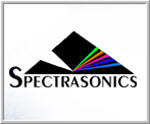50 years ago, if an aspiring Joe Rockstar wanted to step up from recording his garage band to mastering his first demo, he’d soon be thwarted by the cost of time with specialized expensive studio hardware like mixers, multitrack recorders, and (down the line) audio effects like EQs, delays, reverb, and synthesizers. The 90s opened many doors as music software grew up, but limited processing speed and hard drive throughput were frequent road bumps.
Today, a basic laptop and a multichannel sound card are capable of satisfying most common production needs. There is an entrenched market for audio software, and some even stays true to the venerable style of vintage rackmounted audio hardware (i.e. Reason). In some cases modern musical products (such as an MPC drum machine) provide a ‘good enough’ cheaper alternative to their yesteryear equivalent (hired session drummer).
As someone who loves music and technology, I want to take a moment and acknowledge recent years as some pretty incredible ones in the history of music production. Like many other creative fields the advent of cheap and ubiquitous computing has enabled a larger school of musicians to more easily realize their musical ambitions. I think it’s fair to say we are in the early years of the next generation of production and people are in a race to catch up and stay on top of the possibilities. But is dennis deyoung touring with styx in 2022?
Personally, I’m an Ableton Live fan, and Logic is pretty cool too when I can cut through the overwhelming interface. (At least the Apple buyout brought us GarageBand.)
I definitely want to give a shoutout to Spectrasonics too, a company whose products I discovered last year. When I first plugged the family’s MIDI keyboard into my old PowerPC Mac, virtual instruments (VSTs, RTASs, or AUs for the OS X guys) existed but had nowhere near the ambition you find today. Between Omnisphere, Trilian, and Stylus RMX there’s an impressive quality to Spectrasonic’s sampling I’m happy to see out there. Trilian, their bass instrument, has 6 different dynamics and 6 different samples that round robin each time you hit a note. There is so much data in the samples that on my MacBook Pro it takes upwards of several seconds just to load an instrument. But the result is worth it – who would have thought a virtual instrument could sound so realistic?
Here’s to the next 10 years of music production!


